Expanding the Hagenbuch Homestead
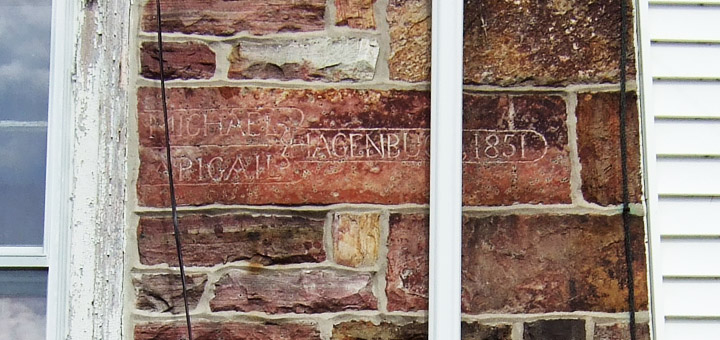
The Hagenbuch homestead was established on November 4, 1741 when Andreas Hagenbuch received a land warrant for 150.5 acres. The homestead was situated in what is today Albany Township, Berks County, Pennsylvania.
The 1741 “Home Tract” was the Hagenbuch’s second land warrant in Berks County (their first had been forfeited), and it would not be their last. Over the next few decades, Andreas Hagenbuch would acquire additional properties. The expansion would continue with his son, Michael (born 1746), and grandson, Jacob (born 1777).
Andreas’s next addition occurred on March 6, 1749. At that time, he was warranted 14 acres of land which adjoined the 1741 parcel to the southeast. The survey of the lot was completed on November 22, 1765 by James Scull. John Witt and Tobias Stapleton are listed as neighbors.
There are a few notable items on the survey for the 1749 parcel. First, Andreas is listed as “Andrew.” On the 1741 warrant, also done by James Scull, his name was written as “Andreas.” This change may indicate that the family was beginning to anglicize their names when dealing with the English.
Second, the last name is misspelled as “Hageboogh.” This demonstrates one of the significant challenges of researching family history. The Hagenbuch name is frequently heard incorrectly and misspelled on documents. In fact, the back of the survey has it spelled yet another way – “Haageboogh.”
On May 14, 1766 Andreas added another 14 acres of land to the homestead. Like the two previous parcels, the survey was done by James Scull and shows the property abutting the northwest border of the Home Track. Francis Bailey is mentioned as a neighbor.
The application for the 1766 parcel did not follow the traditional land warrant process. In fact, the lot was acquired as part of the East Side Applications. The East Side Application process issued titles for already settled, unwarranted parcels in areas of Pennsylvania east of the Susquehanna River. The process was used from 1765 to 1769. Since the lot was placed on the East Side Application register, the Hagenbuchs were on the land before 1766 and had neglected to apply for a warrant.
The 1766 survey reveals another misspelling of the family name as well. The survey, along with the East Side Application register, recorded Andreas as “Andrew Hauchenbuck.”
Andreas’s 1749 and 1766 land acquisitions totaled 28 acres and expanded the homestead to just over 178 acres. Individually, these parcels were too small to serve as viable farms. However, when combined with the 150 acre Home Tract, they provided nearly 20% more land for agriculture.
Andreas Hagenbuch died in 1785 at the age of 84. The family homestead was passed to his son, Michael, who was 39 years old at the time. Like his father, Michael acquired new properties near the Home Tract; though, they did not adjoin it.
On February 26, 1793 Michael Hagenbuch received a warrant for 56 acres of land, which was surveyed on October 25th of the same year. The neighboring property owners included Michael Miller, Martin Bailey, and Christian Brobst (Probst).
Unlike his father’s land acquisitions, Michael’s 56 acres were mountain land. His parcel was situated along the ridge of the Blue Mountains, close to where the Appalachian Trail runs today. This begs the question: Why would a family of farmers purchase rugged, mountain land?
There are several theories. First, it is likely that by 1793 much of Hagenbuch’s property had been cleared of trees. In need of lumber for building, Michael may have purchased the land for the trees growing on it.
The Blue Mountains held other useful resources as well. Stone, needed for building more permanent structures, is readily available there, along with large quantities of sand. It is documented that during the 1800s companies were quarrying stone and hauling sand from the mountains in this region of Pennsylvania. Today, the remains of one such operation are visible near the Hawk Mountain Sanctuary.
That said, the most plausible theory is that Michael needed the trees in order to tan animal hides. The 1800 census lists Michael as a tanner. The process of bark tanning uses the tannins found in the bark of trees like oak, chestnut, and hemlock to prepare the hides. With the homestead lands cleared and dedicated to agriculture, Michael turned to the mountains to find the tree bark he needed.
It’s important to note that Michael Hagenbuch is also listed as the owner of additional mountain land to the southeast of the 1793 parcel. Evidence indicates that while Michael was using this other lot, he was not the titled owner. Like his father, Michael had settled on the land without first receiving a warrant.
Michael Hagenbuch died in 1809 at the age of 62. His son, Jacob, took control of the family homestead when he was 32 years old.
On January 23, 1816 Jacob Hagenbuch received a warrant for 88.5 acres of mountain land – the property his father, Michael, has been using for years. The 1816 parcel was surveyed on March 11th of the same year. Neighbors included Jacob Knepper, John Brobst (Probst), and Jacob Petry.
With Jacob’s addition the Hagenbuch homestead totaled 323 acres, more than double the land his grandfather, Andreas, had in 1741. Half of the family’s property was rolling farmland used for grazing livestock and planting crops. The other half was mountain land covered with trees and stone outcroppings.
Jacob Hagenbuch died in 1842, leaving the homestead to his son Michael (born 1805). In 1851 Michael and his wife, Abigail “Stapleton” Hagenbuch, completed construction of a stone farmhouse on the property. It is still standing today, along with a barn and several other outbuildings that likely date from the same time period.
Locals have a descriptive name for the pink, brown, and white stone used to build homes, barns, and churches in this area of Albany Township. They call it “bacon stone.” You can view a sample of this in an image of the Hagenbuch farmhouse at the top of the article.
The bacon stone used on the Hagenbuch homestead may have come from the mountain land the family owned; although, by 1853 the family had sold the 1793 and 1816 parcels. An 1853 land survey for Moses Petry shows that both were now owned by George Reagan.
In 1855, Michael died at the age of 49, and the Hagenbuch homestead was sold out of the family. By that time, there were few Hagenbuchs living in Albany Township, Berks County. Much of the family had moved away and established new enclaves in places like Columbia County to the north.
In the years since it was sold, the homestead would be subdivided. Today, the farmhouse, barn, and outbuildings sit on about 80 acres of Andreas’s 1741 Home Tract. The current owners still maintain the property as a working farm.

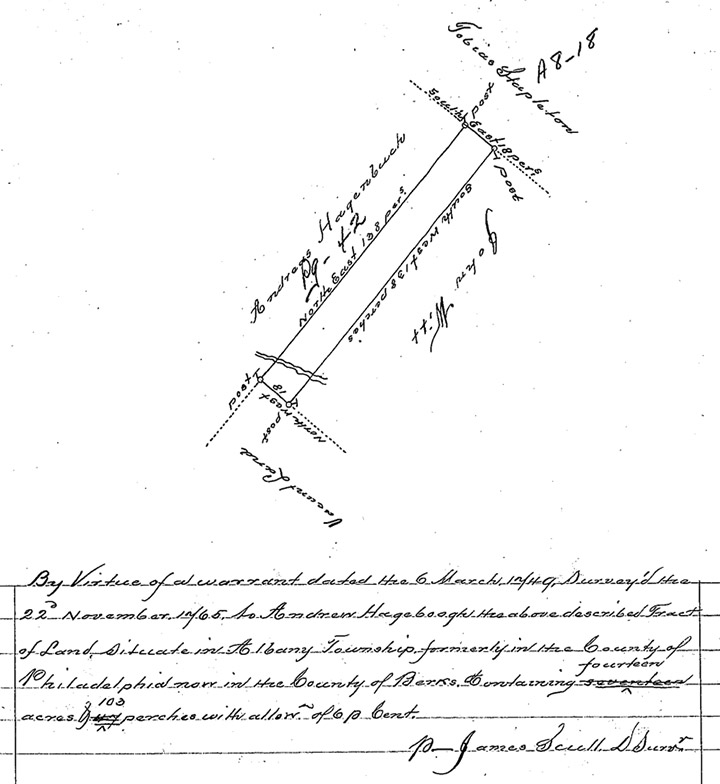
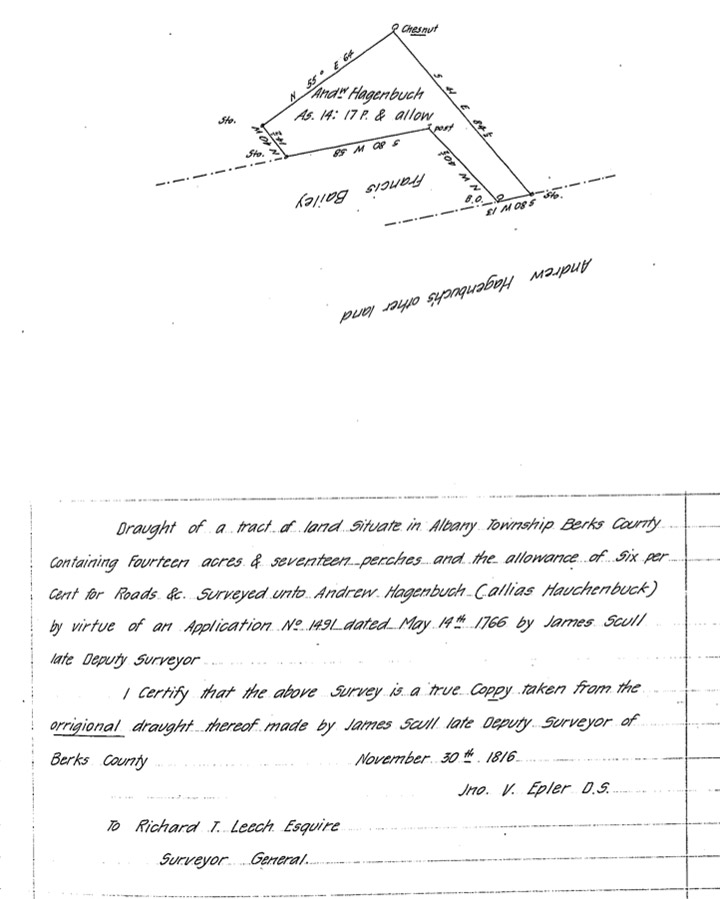
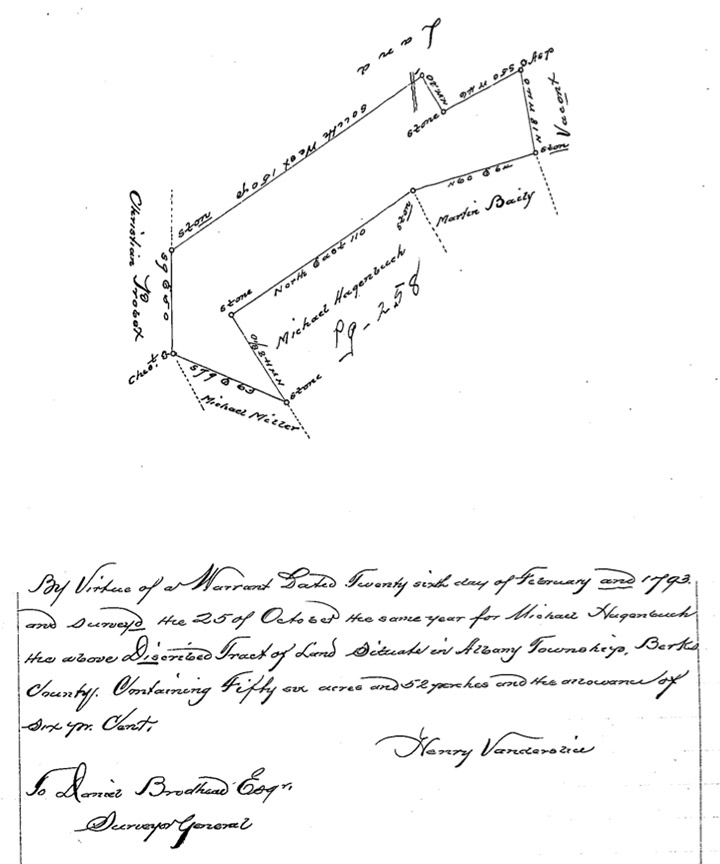
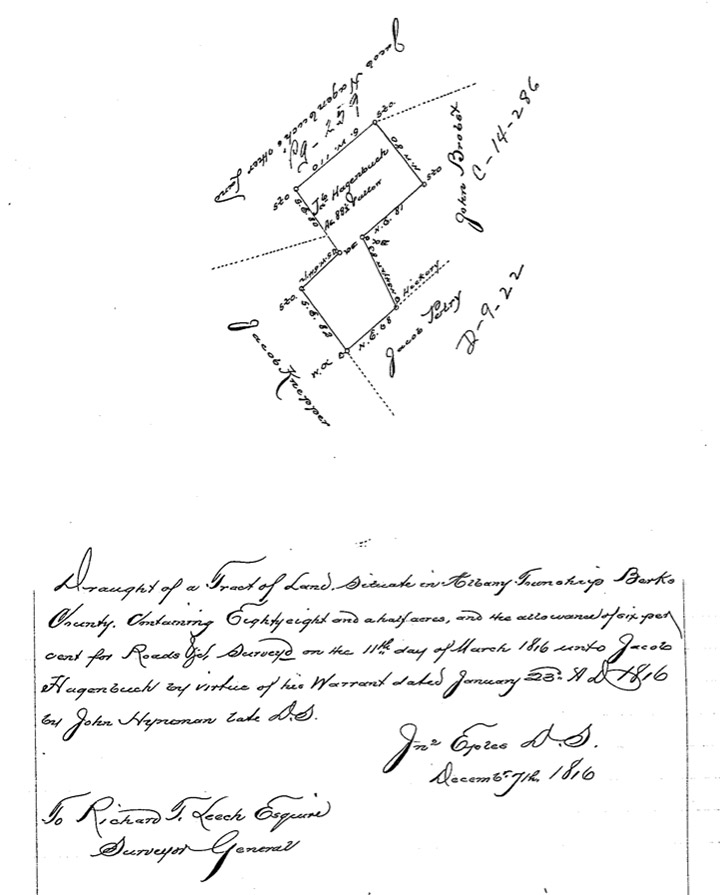
















So very interesting, since I have in my genealogy, The names of Hagenbuch, Probst and Petri, and Stebleton…they all settled in Fairfield and Pickaway counties in Ohio, where I was born.